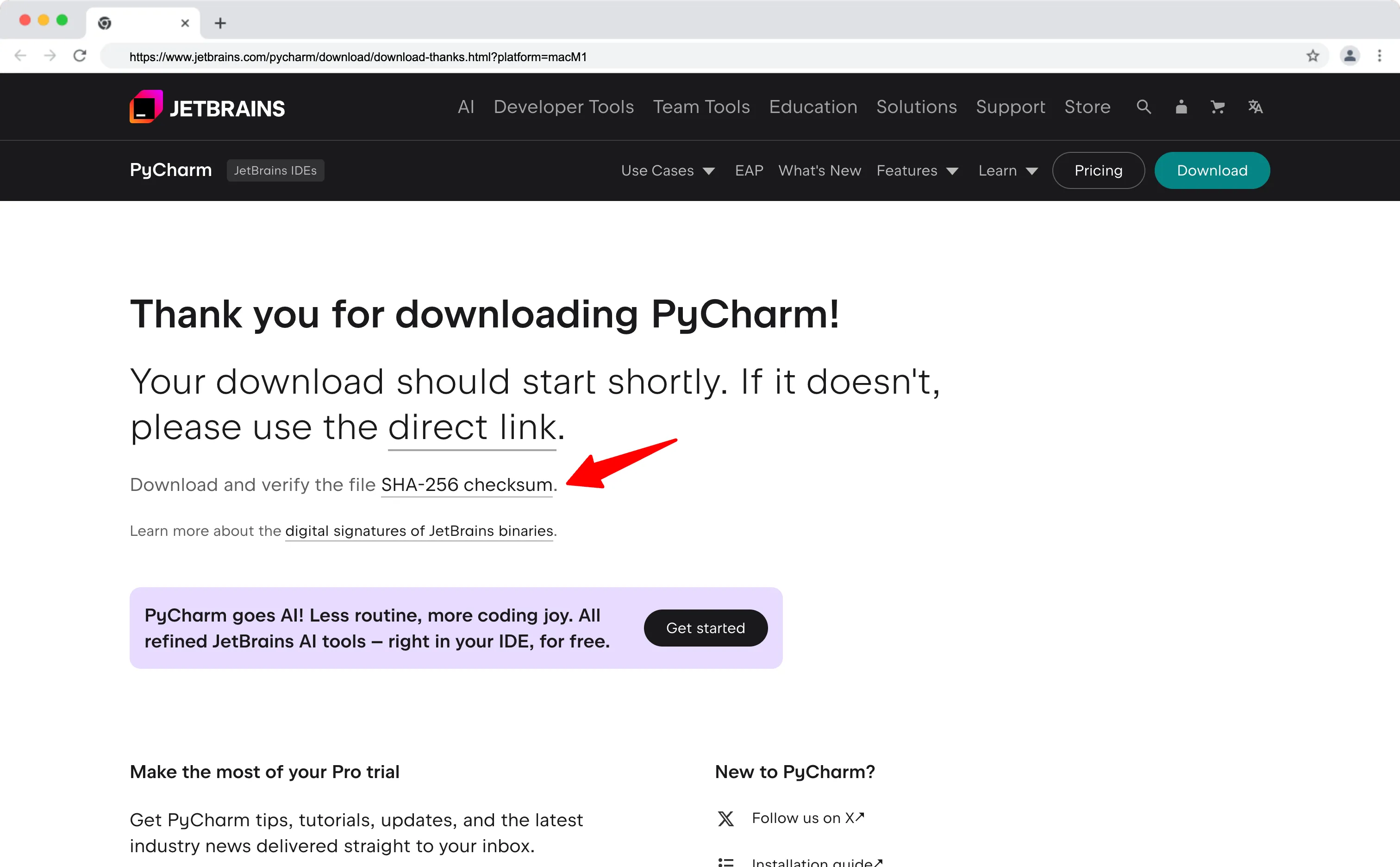When downloading apps or files, you might sometimes see a “Verify Download” option.
It’s a small step, but an important one — it helps users make sure the file hasn’t been tampered with or corrupted.

As a developer or creator, adding an easy verification method builds trust and protects your users.
The simplest way?
Provide a .sha256 file along with your download.
Here’s how you can do it.
Step 1: Generate a .sha256 file for your download
First, generate a checksum and store it in a .sha256 file.
On macOS or Linux, run:
shasum -a 256 yourapp.dmg > yourapp.dmg.sha256On Windows, you can generate the checksum like this:
CertUtil -hashfile path\to\yourapp.dmg SHA256 > yourapp.dmg.sha256This creates a small .sha256 file that contains the checksum of your download.
Step 2: Publish both files
When offering your app or file, publish both:
- the main file (e.g.,
yourapp.dmg) - the checksum file (e.g.,
yourapp.dmg.sha256)
Example:
**Download yourapp:** [Download v1.0](https://example.com/download/yourapp.dmg)
**Checksum file:** [Download .sha256](https://example.com/download/yourapp.dmg.sha256)Step 3: Help users verify the download
Tell users how they can quickly verify the file using the .sha256 file. They have to download both the files.
Once downloaded, they can run the following command to verify.
On macOS / Linux:
shasum -a 256 -c path/to/downloaded/yourapp.dmg.sha256On Windows (manually compare):
Open the .sha256 file and manually compare the checksum with the one you generate using:
CertUtil -hashfile path\to\downloaded\yourapp.dmg SHA256If the checksums match, the file is safe.
If not, users should not install or open the file.
Final Thoughts
Adding a .sha256 verification is a simple, no-fuss way to show users you care about their security.
It protects your app’s reputation and makes the download experience safer and more professional.
Next time you share a file, publish a checksum too.
Your users (and your future self) will thank you.